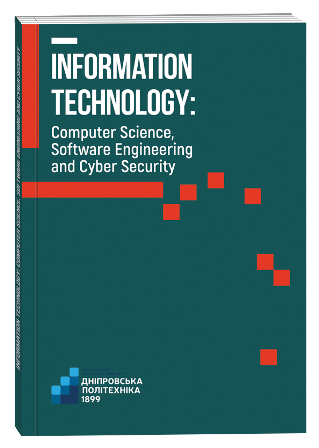IMPROVING THE RELIABILITY OF PHISHING SIMULATION RESULTS THROUGH BOT FILTERING
DOI:
https://doi.org/10.32782/IT/2025-1-5Keywords:
phishing simulations, cybersecurity training, bot filtering, employee awareness, simulation accuracy.Abstract
Phishing simulations are an essential instrument for improving employee awareness and skills in cybersecurity, particularly in the face of escalating cyber threats, such as financial fraud and data breaches. These simulations enable organizations to evaluate the effectiveness of their training programs and measure employee readiness to detect and respond to phishing attempts. However, the reliability of phishing simulation results is often compromised by automated clicks generated by bots, which are part of corporate email security systems. This study aims to address these distortions by developing an effective bot filtering algorithm to ensure that simulation data accurately reflects human behavior. Methodology. The study proposes an algorithm for filtering automated interactions in phishing attack simulations and analyzes its effectiveness. The algorithm is based on the empirical determination of time intervals between the opening of an email and clicking on a link, allowing for the identification of bot clicks and their differentiation from real user actions. The proposed approach has been experimentally validated using corporate data, enabling the assessment of its accuracy and reliability. The implementation of this algorithm enhances the analysis of phishing simulation results, improves the reliability of user behavior assessment, and increases the effectiveness of cybersecurity training programs. Scientific novelty. The study presents a novel approach to filtering bot interactions in phishing simulations by introducing experimentally validated criteria. The proposed algorithm is based on rapid-response patterns observed in bot activity, allowing organizations to exclude such interactions and focus on genuine user behavior. This innovation significantly enhances the reliability of phishing simulation results. Conclusions. The implementation of the bot filtering algorithm reduces distortions in phishing simulation data, enabling a more accurate assessment of employee readiness and improving the effectiveness of training programs. This approach not only enhances organizational cybersecurity but also fosters a culture of vigilance and continuous learning to counter evolving cyber threats.
References
Zhou Y., Cui X., Qu W., Ge Y. The effect of automation trust tendency, system reliability and feedback on users’ phishing detection. Applied Ergonomics. 2022. URL: https://www.sciencedirect.com/science/article/pii/S0003687022000771 (дата звернення: 28.01.2025).
Oest A., Safaei Y., Doupé A., & Ahn G. J. Phishfarm: A scalable framework for measuring the effectiveness of evasion techniques against browser phishing blacklists. IEEE Symposium on Security and Privacy. 2019. URL: https://ieeexplore.ieee.org/document/8835369 (дата звернення: 28.01.2025).
IBM. Cost of a Data Breach Report 2024. URL: https://keepnetlabs.com/blog/171-cyber-securitystatistics-2024-s-updated-trends-and-data (дата звернення: 28.01.2025).
DataBreaches. Credential phishing attacks up over 700 percent. URL: https://databreaches.net/2024/12/18/credential-phishing-attacks-up-over-700-percent (дата звернення: 28.01.2025).
Panda Security. Cybercrime report for the first five months of 2024. URL: https://www.pandasecurity.com/en/mediacenter/fbi-internet-crime-complaint-center-reports-losses (дата звернення: 28.01.2025).
HIPAA Journal. FBI BEC warning: $5.5 billion lost. URL: https://www.hipaajournal.com/fbi-bec-warning-55-billion-lost (дата звернення: 28.01.2025).
Song L., Wang M. Efficient defense strategy against spam and phishing email: An evolutionary game model. Journal of Information Security and Applications. 2021. URL: https://www.sciencedirect.com/science/article/pii/S2214212621001617 (дата звернення: 28.01.2025).
Chen J., Mishler, S., Hu B., Li N., Proctor R. The impact of reliable methodologies for bot filtering on user interaction simulations. International Journal of Human-Computer Studies. 2022. URL: https://www.sciencedirect.com/science/article/pii/S0306457322002989 (дата звернення: 28.01.2025).
Oest A., Safaei Y., Dupe A., An G. J. Scalable methods for evaluating phishing attack evasion effectiveness. IEEE Symposium. 2019. URL: https://www.usenix.org/system/files/sec20fall_oest_prepub.pdf (дата звернення: 28.01.2025).
Huang D., Chen N. Machine learning for adaptive cybersecurity training. Cybersecurity Applications Journal>. 2023. URL: https://www.researchgate.net/publication/380771681_Study_on_Empowering_Cyber_Security_by_Using_Adaptive_Machine_Learning_Methods (дата звернення: 28.01.2025).
Wang M., Song L. An evolutionary game model for spam and phishing protection. Journal of Information Security and Applications. 2021. URL: https://www.sciencedirect.com/science/article/pii/S2214212621001617 (дата звернення: 28.01.2025).
Chen K., Li J., Zhang H., Zhao S. Utilizing large language models for cyber threat detection. Frontiers in AI. 2024. URL: https://arxiv.org/pdf/2405.04760 (дата звернення: 28.01.2025).
Sadeghpour S., Vlaidzik N. Click fraud in digital advertising: A review. Computers, 10(12). 2021. URL: https://www.mdpi.com/2073-431X/10/12/164 (дата звернення: 28.01.2025).
Pantis J., Patsakis C. Anatomy of deceit: Technical and human factors in phishing campaigns. Computers & Security. 2024. URL: https://www.sciencedirect.com/science/article/pii/S0167404824000816 (дата звернення: 28.01.2025).
Ahmad S., Zaman M., Al-Shamayleh A. S. AI models for phishing detection: A detailed review. IEEE Open Journal. 2024. URL: https://ieeexplore.ieee.org/abstract/document/10681500/ (дата звернення: 28.01.2025).
Goenka R., Chawla M., Tiwari N. A comprehensive overview of phishing: Environments, targets, attack methods, and defenses. Springer. 2024. URL: https://link.springer.com/article/10.1007/s10207-023-00768-x (дата звернення: 28.01.2025).
Delgado M., Pereira S. Data-driven human and bot recognition from web activity logs based on hybrid learning techniques. Digital Communications and Networks. 2024. URL: https://www.sciencedirect.com/science/article/pii/S2352864823000330 (дата звернення: 28.01.2025).
Putra M. A. R., Ahmad T., Hostiadi D. Behavior pattern analysis of botnet attacks in computer networks. International Journal of Intelligent Systems. 2022. URL: https://inass.org/wp-content/uploads/2022/05/2022083148-2.pdf (дата звернення 28.01.2025).
Suchacka G., Cabri A., Rovetta S., Masulli F. Effective real-time web bot detection. Knowledge-Based Systems. 2021. URL: https://www.sciencedirect.com/science/article/pii/S0950705121003373 (дата звернення: 28.01.2025).







